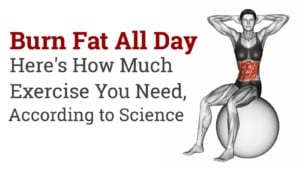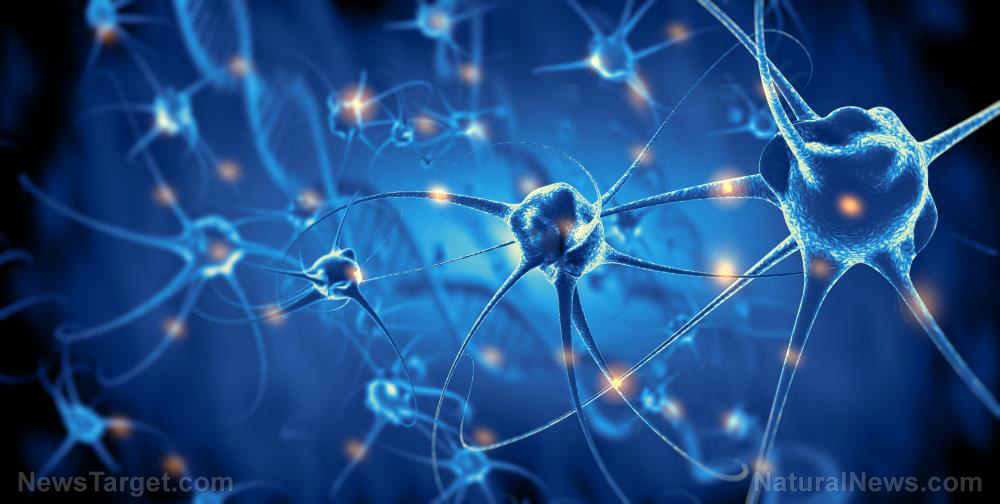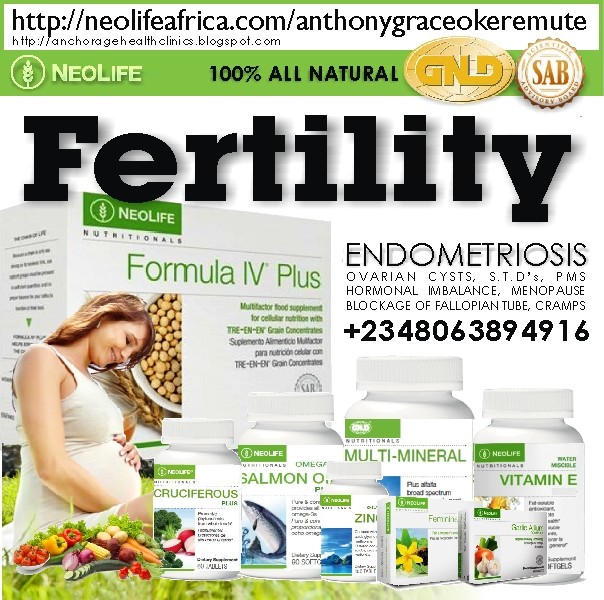Nature Knows and Psionic Success
God provides
Science Explains The Difference Between Healthy And Unhealthy Fat

Fat is one of the three crucial macronutrients that the body requires, but it also gets a bad reputation. People believe that fat can be responsible for weight gain, heart disease, and countless chronic and degenerative illnesses. But the secret lies in the health value of the fats that you eat. There’s more to fat than just pizza and fried foods. In fact, there are as many as four different kinds of fats, all of which carry different levels of healthiness. How does this work? Well, each type of fat has a different carbon structure – varying in length, chain size, and bonds. This is what determines how these fats react to situations like cooking and consumption, as well as how they affect the body when we eat them. To better understand what fats to enjoy and which ones to avoid, you need to know a bit about each of these four fats, how to tell them apart, and why they’re different. Here’s how science explains the difference between healthy and unhealthy fat . Science Explains The Difference Between Healthy And Unhealthy Fat 1. Healthy Fat: Monounsaturated Fatty Acids Monounsaturated fatty acids, also known simply as MUFAs, are a kind of fat that the body is capable of making on its own. These fatty acids respond to the consumption of carbohydrates , becoming synthesized in the liver as you digest these components. Of course, you can also get MUFAs from plenty of foods, including: Olive oil Avocados Cashews Almonds Pistachios Pecans Peanuts Sunflower seeds Pumpkin seeds Pork Eggs Most MUFAs – and the best ones! – are plant-based, and they contain oleic acid as the main ingredient. Some also may contain palmitoleic acid or vaccenic acid instead. A large majority of MUFAs are liquid in state at room temperature, […]
The 10 Algorithms every Machine Learning Engineer should know

“ Computers are able to see, hear and learn. Welcome to the future. ” And Machine Learning is the future. According to Forbes , Machine learning patents grew at a 34% Rate between 2013 and 2017 and this is only set to increase in coming times. Moreover, a Harvard Business review article called a Data Scientist as the “Sexiest Job of the 21st Century” (And that’s incentive right there!!!). In these highly dynamic times, there are various machine learning algorithms developed to solve complex real-world problems. These algorithms are highly automated and self-modifying as they continue to improve over time with the addition of an increased amount of data and with minimum human intervention required. So this article deals with the Top 10 Machine Learning algorithms . But to understand these algorithms, first, the different types they can belong to are explained briefly. Machine Learning algorithms can be classified into 3 different types, namely: Supervised Machine Learning Algorithms: Imagine a teacher supervising a class. The teacher already knows the correct answers but the learning process doesn’t stop until the students learn the answers as well (poor kids!). This is the essence of Supervised Machine Learning Algorithms. Here, the algorithm is the student that learns from a training dataset and makes predictions that are corrected by the teacher. This learning process continues until the algorithm achieves the required level of performance. Unsupervised Machine Learning Algorithms: In this case, there is no teacher for the class and the poor students are left to learn for themselves! This means that for Unsupervised Machine Learning Algorithms, there is no specific answer to be learned and there is no teacher. The algorithm is left unsupervised to find the underlying structure in the data in order to learn more and more about the data itself. […]
‘Dementia Reimagined’ Asks: Can There Be Happiness For Those With Memory Loss?
TERRY GROSS, HOST: This is FRESH AIR. I’m Terry Gross. There’s no cure for dementia, and there’s unlikely to be one in the foreseeable future, which is why my guest, Dr. Tia Powell, is focusing on questions like, how can we devise a viable strategy to pay for long-term care? How do we preserve dignity? How do we balance freedom and safety? What is a good death for someone with dementia? And how do we help people who are losing their memory find some joy? Powell is the author of the new book "Dementia Reimagined." She is the director of the Montefiore Einstein Center for Bioethics and is a professor of psychiatry and bioethics at Albert Einstein College of Medicine. Some of her knowledge about dementia comes from having taken care of her mother when she had dementia. Powell’s grandmother had dementia, too. Dr. Tia Powell, welcome to FRESH AIR. There is a story in your book that you tell about when your mother was taking care of your grandmother, and your grandmother had dementia. And I want you to tell this story to our listeners. It’s a story about how your mother takes your grandmother outside on a beautiful day, seats her in a comfortable chair with an afghan covering her. Tell us the story. TIA POWELL: So my mother got my grandmother out onto the porch, which was pretty difficult. She was really at the end stages of dementia and couldn’t move easily. But my mother got her out there and put her in an easy chair and put her feet up and tucked in, around my grandmother’s legs, an afghan that my grandmother herself had crocheted many, many years before, when she’d been able to do that kind of thing. And after all this effort, she […]
Study reveals link between what you eat and brain function: Following a healthy diet can lower your risk of Alzheimer’s

( Natural News ) The findings of a new study suggest that a person should pay extra attention to what he or she eats, but for a different reason. Iowa-based researchers discovered a connection between the levels of a satiety hormone found in the brain and the risk of Alzheimer’s disease . Satiety is the feeling of fullness and the absence of hunger for a period of time after eating a meal. It stems from several signals that are sent by the brain during the consumption, digestion, and absorption of food. Researchers from Iowa State University investigated a satiety hormone called cholecystokinin. The hormone appears in the brain and the small intestine and plays essential roles in these parts of the body. While evaluating cholecystokinin’s effects on the brain, the researchers found that having high levels of the satiety hormone lowers the risk of Alzheimer’s disease. Their findings were published in the journal Neurobiology of Aging . (Related: Is Mucuna the Ultimate NATURAL CURE for Depression and Dementia? ) The satiety hormone cholecystokinin is linked to memory formation The Iowa State research team drew data from the Alzheimer’s Disease Neuroimaging Initiative (ADNI) and examined the levels of cholecystokinin in 287 participants. Cholecystokinin is a peptide hormone that is structurally similar to gastrin, a regulator of gastric acid secretion. Cholecystokinin makes it possible for fats and proteins to be absorbed in the small intestines. Auriel Willette, an assistant professor at Iowa State University , said that the satiety hormone is also present in the brain. It can be found in the hippocampus, the region of the brain in charge of forming memories. Mother Nature’s micronutrient secret : Organic Broccoli Sprout Capsules now available, delivering 280mg of high-density nutrition, including the extraordinary "sulforaphane" and "glucosinolate" nutrients found only in cruciferous healing […]
‘Dementia Reimagined’ Asks: Can There Be Happiness For Those With Memory Loss?
TERRY GROSS, HOST: This is FRESH AIR. I’m Terry Gross. There’s no cure for dementia, and there’s unlikely to be one in the foreseeable future, which is why my guest, Dr. Tia Powell, is focusing on questions like, how can we devise a viable strategy to pay for long-term care? How do we preserve dignity? How do we balance freedom and safety? What is a good death for someone with dementia? And how do we help people who are losing their memory find some joy? Powell is the author of the new book "Dementia Reimagined." She is the director of the Montefiore Einstein Center for Bioethics and is a professor of psychiatry and bioethics at Albert Einstein College of Medicine. Some of her knowledge about dementia comes from having taken care of her mother when she had dementia. Powell’s grandmother had dementia, too. Dr. Tia Powell, welcome to FRESH AIR. There is a story in your book that you tell about when your mother was taking care of your grandmother, and your grandmother had dementia. And I want you to tell this story to our listeners. It’s a story about how your mother takes your grandmother outside on a beautiful day, seats her in a comfortable chair with an afghan covering her. Tell us the story. TIA POWELL: So my mother got my grandmother out onto the porch, which was pretty difficult. She was really at the end stages of dementia and couldn’t move easily. But my mother got her out there and put her in an easy chair and put her feet up and tucked in, around my grandmother’s legs, an afghan that my grandmother herself had crocheted many, many years before, when she’d been able to do that kind of thing. And after all this effort, she […]
Do You Want To Get Pregnant This Year? – Health – Nairaland

With NeoLife Nutritional Whole-foods Supplements, your Infertility Worries are OVER! Infertility is usually defined as the failure to conceive after a year or more of regular sexual activity during the time of ovulation. Infertility arises from different factors such as; (A) Thick mucus in the Fallopian Tubes. (B) Damaged Fallopian Tubes. (C) Ovaries fails to release Eggs, because of adhesions. (D) Uterus contain Fibroid, its lining may be affected by Endometriosis. (E) Failure to Ovulate, due to Hormonal Imbalance caused by Cyst or effect of Radiation treatments. (F) Sexually transmitted Infections like; Syphilis, Gonorrhoea, Chlamydia. (G) Progesterone becomes Imbalanced. Causing miscarriages as fertilized eggs can not survive due to Imbalanced hormones. (H) Birth Control Pills and Injections, can also lead to Infertility in women. Correct your body metabolism with our GNLD NEOLIFE Nutritional Supplements! Are you keen of conception this year? You’ll need to thoroughly engage yourself in routine purification of your Hormonal System with these GNLD NEOLIFE Supplements; (1) Feminine Herbal Complex in 60 Tablets • Balances and regulates woman’s monthly cycle. • Increases fertility chances, eradicates P.M.S. • Regulate heavy menstrual flow. • Prevent premature menopause. SPECIALTY HERBAL FOR OPTIMAL WELLNESS Contains 10 herbs in a delicate, balanced mix to help women achieve a state of optimal health, comfort, calmness, and vitality St. John’s Worth, shown to help support calmness, boost spirits, and promote positive mental attitude* Vitex and Red Sage, Support normal female physiology and function. Benefits: Reduces inflammation. Relaxes muscle spasms. Promotes vitality. Supports normal female function. Reduces excessive sweating. Reduces menstrual cycle irregularities. Relieves mild depression. Overcomes heavy menstrual flow. Relieves irritability and anxiety. Assist in excretion of excess fluid. Reduce nervous tension. Relieves urine retention. It gives stamina and endurance. It reduces abdominal bloating. It is good for swollen fingers/ankles and legs. It […]
Unlocking nature’s medicine cabinet: Why ancient aromatherapy is growing in popularity

Shining out from the mobile phone just inches from your face, a blue glow illuminates your bedroom and keeps your eyes open and unblinking. It’s 2am and the land of nod looks further away than Timbuktu. Yes, between the stresses of work, everyday worries and busy social lives, it’s never been harder to relax and get a good night’s sleep. But what if a little spritz and spray on your pillow or a slick of oil on the skin could boost your bedtime, lead to a better night’s rest, and even improve your overall health? More and more of us are turning to the traditional holistic practice of aromatherapy to help promote our mental, emotional and physical wellbeing, and the global market for essential oils is estimated to experience a year-on-year growth rate of more than 8% in 2019. What’s more, experts believe the worldwide market will be worth £3.9 billion annually by 2023. So, why are we now turning to ancient remedies to ease everything from anxiety to muscle aches and pains? According to Rebecca O’Connor, aromatherapist and founder of Beatitude, essential oils are growing in popularity because of our modern, stressful lives. She said: “As a society we have never been more stressed, and aromatherapy has become bigger because it is such a great antidote for helping your mind relax. “As technology has grown, we have become so switched on all the time – everyone can get hold of us 24 hours a day, seven days a week. “So, it’s useful to have a tool that can help you escape and get yourself in a better or a more relaxed state of mind. “Whether it’s a bath filled with lovely oils, a body massage, a facial, or even just burning a candle, there are proven scientific effects […]
Scientist Says Just 30 Minutes Of Your Time Twice A Year Could Help Cure Alzheimer’s

“If you want to do something to hasten a cure for Alzheimer’s, join the Brain Health Registry,” said Michael W. Weiner, M.D. A professor of radiology and biomedical engineering, medicine, psychiatry and neurology at the University of California, San Francisco (UCSF), Weiner is the principle investigator of the Brain Health Registry (BHR) and the National Institutes of Health (NIH)-funded Alzheimer’s Disease Neuroimaging Initiative (ADNI)—a 14-year longitudinal study of over 1,500 subjects at 60 sites across the United States and Canada and one of the largest observational studies in the world using MRI, PET and biomarkers to study Alzheimer’s Disease. Dr. Michael Weiner, professor of radiology and biomedical engineering, medicine, psychiatry and neurology at the University of California, San Francisco (UCSF), and principle investigator of the Brain Health Registry (BHR). Photo Courtesy of the University of California, San Francisco (UCSF). Weiner launched BHR five years ago as a low-cost, scalable approach in response to the “very expensive, high tech approach” of ADNI to studying Alzheimer’s. The BHR’s questionnaires and brain tests serve as tools that help researchers identify normal elderly people at risk for cognitive decline and dementia and provide data to facilitate the work of other investigators. “I have been doing research for 50 years. I have been doing Alzheimer’s research for 25 years,” he said. “The overall goal of our field is to identify people at risk of developing Mild Cognitive Impairment and dementia and to help develop treatments to prevent them. But one reason the research is going slow is that we are not getting enough volunteers for research studies. We want everyone. We want African American, Spanish and Asian people. We want blue collar, white collar, working people, high school graduates, college graduates and those with advance degrees. We want our registry to look like America.” […]
Supplements for the brain: 7 of the best supplements for the brain to improve cognivitive

Growing old is an inevitable part of life however certain supplements and methods can help reduce the decline of cognitive health and help you feel younger. Supplements are believed to help cognitive health by increasing blood flow to the brain and improving the brain’s functions, memory and sharpness. These supplements claim to boost brain power and some supplements may even reduce the risk of dementia and Alzheimers. Multiple processes cause us to age. Some are simple, such as the depletion of a vital substance called phosphatidylcholine in our cell membranes Vitamin B12 and mental health How to live longer: Tips and supplements. B vitamins In a study , B vitamins were given to people aged over 70 for a two-year period. The patients had previously suffered from mild cognitive impairment and found that those who had taken a combination of B vitamins, folic acid and vitamin B12 had a slower cognitive decline compared to those who had taken a placebo. It is advisable to not just rely on the food you eat but rather take a supplement for vitamin B, folic acid and vitamin B12. Ted Cooperman, president of ConsumerLab.com said: “About thirty percent of people over the age of 50 don’t absorb B-12 properly from food.” Curcumin This compound is found in turmeric hence the orange-isa colour. It provides a host of anti-inflammatory and antioxidant properties. Some research has found that it may also benefit both thinking and memory. Fish oil Fish oil supplements contain two types of omega-3 fatty acids which has been linked to many health benefits and has been show to help reduce the decline of brain function. It has a rich source of docosahexaenoic acid (DHA) and eicosapentaenoic acid (EPA). The DHA helps with the structure of the brain and taking DHA supplements has […]
How to Sleep for a Leaner, Longer, Healthier Life

wearing my blue blockers to protect my eyes from artificial light. Bodhi is already passed out (naturally) Hey Rockstar, how much sleep did you get last night? I recently moved and one of the hardest things for me turned out to be shifting from PST to EST. Getting onto a good, solid sleep schedule ended up at the end of my list during that busy time. And I paid the consequences. Comparing body scans that I took right when I moved to 3 months in, I saw lean body mass decrease, and body fat increase. I hadn’t changed anything about my eating or exercise regiment, so this was significant. Blood tests showed that my thyroid was starting to drop, my blood sugar was getting high, my adrenals were working overtime, and I could tell you that my energy wasn’t the same. It seems so obvious now – but with so much to do, I just kept pushing my bedtime back to later and later, and getting up with the dogs meant I still had to get up early. I’d often fall back asleep exhausted for an hour after taking them out, which meant that I woke up groggy, feeling rushed, and started the day with lower energy – a time when I needed it most! Once I fixed my sleep – which I did by setting an alarm to get in bed, reading before bed, going to bed and waking up at the same time every day – my body started to respond very quickly. I had more energy in the morning (and all day), and I started to feel like my old self. (watch this video to hear more about my story, and a discussion of some of the points in this article) Maybe you, or someone you […]
7 Reasons You Should Still Keep a Paper Map in Your Glovebox

Ever since Google Maps launched its app in 2008, I’ve been using GPS to get around town, and across the country. For a decade, a digital voice from my phone has led me, turn-by-turn, in cities I’m not familiar with and even cities I’ve lived in for years. But during the past year or so, I’ve become uncomfortable with my reliance on GPS for a variety of reasons. So I bought a paper map of my fair city of Tulsa, as well as a road atlas of the United States. (Apparently, I’m not alone in this; sales of the classic Rand McNally Road Atlas have, counterintuitively, been rising in the last several years). And I’ve been pleasantly surprised by how enjoyable it’s been to use old-fashioned maps to get around town, and country. In fact, I’ve gone to using “analog” maps as my primary method of navigation, only relying on Google Maps as a back-up. Here’s why I’ve made this navigational switch, and 7 reasons — from the practical to the philosophical — why you might consider putting a paper map back in your glovebox too: 1. Paper maps never lose power or wireless signal. I’m a frequent visitor of southeast Oklahoma. The landscape in that part of the state is beautiful and surprisingly mountainous, but my wireless connection there is atrocious — which means relying on Google Maps can get me lost and definitely has. While your phone’s GPS app might always be connected to a satellite, you need a wireless connection to access the map and directions it offers you. If you don’t have a wireless connection, you’ll know your GPS coordinates, but won’t have much of an idea of how to navigate to a specific location. Google Maps has remedied this issue by allowing you to […]
13 best alternative menopause remedies to help alleviate symptoms

(Photo: Dagsmejan sleepwear) The menopause. It happens to every woman, but when symptoms hit, nothing quite prepares you for them. A natural part of ageing, the menopause and the transition towards it, the perimenopause, can strike at any age – but usually between 45 and 55 – with all sorts of unwanted side effects. These can last from four to 10 years. And any woman who is experiencing it, or has gone through it already, will tell you it can be a roller coaster ride of emotions and health issues. When you’re out the other side – the average age is 51 – there’s no more monthly misery to contend with but the journey there can be fraught with hot flushes, night sweats, mood changes, sleep problems and even anxiety. All this is caused by a natural drop in hormones as oestrogen levels decline, which can affect mood and also the skin, changing the elasticity and thickness. Annie Coleridge, head of strategy and operations at healthcare company Thriva says: “Each woman’s experience can be different. There are lots of different ways to manage your menopausal symptoms but, in general, some simple lifestyle changes can really help. These include having a balanced and nutrient-rich diet with enough fruit and vegetables. And regular exercise at least three times a week can help reduce hot flushes and manage your mood. Even making sure you’re getting at least six to eight hours sleep a night can really help with any associated stress and low mood.” While there are ways to manage the menopause medically, such as HRT, there are some simple and effective things you can try to help improve symptoms and to get you through the tough times. We’ve picked out some alternative ways to treat skin, keep calm, improve sleep and […]
Medicinal Scents And How To Make Your Home Smell Healthy

Medicinal scents are fragrances or aromas that tickle our noses as we walk into a room and somehow make us feel good at the same time. We are discovering more studies that have found some of the most amazing benefits of certain aromas and how powerfully they can affect our well-being. As a result, we’re seeing so many new innovations and product creations using different scents to harness the true power of these aromas. Who would think that a candle could make such a difference to the state of our health? Interestingly, every experience we encounter in our lives, we generally associate a particular smell with it, unconsciously. Research says that both oils and candles can evoke a sense of place – like feeling at home. They can also trigger specific memories of your childhood. In fact, smells are so powerful that there are even psychoactive perfumes designed to evoke new emotions. People are using them in their art installations, like Jean-Marc Chaillan’s Mood Cloud. This artwork explores the not too far-fetched concept of melding wellness with big data (such as well being micro sensors). Better yet, there are countries that are using aromas to relax huge cities of people, which proves the power of medicinal scents. I bet you didn’t know that scientists have also discovered that wine tasting or smelling works the brain harder than a maths problem. Medicinal Scents Are Underrated Ironically, humans continue to downplay the importance of being able to smell. In fact, each time you smell you are providing your brain with a ton of information about your surroundings. This can be both physical and emotional feedback. Being able to smell an area or person also makes you feel a certain way which affects your body language, mood and even your safety mechanisms. […]
Citicoline Market Prognostications Highpoint Positive Revenue During Forecast Period, 2018 to 2028
The citicoline market was valued at over US$ 530 million in 2018 and is expected to witness substantial Y-o-Y growth of 8% in 2019 This press release was orginally distributed by SBWire Rockville Pike, MD — ( SBWIRE ) — 05/21/2019 — According to a recent research by Fact.MR, the citicoline market is estimated to surpass US$ 550 million in 2019. Citicoline demand is driven by a range of factors, notably increasing geriatric population and growing use among eSports players. The study offers in-depth and incisive insights on key factors influencing the global demand for citicoline. Supplement Consumption Among eSports Players: A Lucrative Opportunity Growing popularity and increasing investments in eSports is helping the market go mainstream which, in turn, is opening an assortment of opportunities for various industries. Players participating in eSports tournaments are seeking cognitive enhancing supplements which can help them concentrate, plot strategies, and improve working memory. Additionally, a ban on the use of other nootropics such as Ritalin and Adderall in eSports leagues is creating demand for ‘permissible’ supplements. Citicoline’s negligible toxicity and its organic nature is making it an appealing prospect for eSports players. With regulations allowing the use of citicoline in functional food and supplements, manufacturers are increasingly focusing towards including the compound in their products to capitalize on the bolstering demand for cognitive-enhancing supplements in eSports. Get Sample Copy of this Report @ https://www.factmr.com/connectus/sample?flag=S&rep_id=2868 Citicoline’s Role in Ischemic Stroke Treatment Creating Opportunities The adverse and often fatal impact of ischemic stroke on human health, coupled with increasing prevalence is bolstering demand for effective treatment of the condition. According to WHO, stroke is the second leading cause of death in the world and the third leading cause of disabilities in adults. Additionally, the lack of a standard procedure of treatment for different ischemic […]
If You’re Curious About Nootropics, It’s Time to Try This Clinically Proven Brain Booster

Most of us use a psychoactive drug on a daily basis in order to maximize our mental alertness and wakefulness. That drug, of course, is caffeine . About 90 percent of Americans consume it in one form or another every single day, while at least 50 percent consume more than 300 milligrams. This isn’t necessarily a bad thing. Doctors and scientists aren’t sounding the alarms about a caffeine epidemic. That said, if we really want our brains work better, our first goal should be providing them with the best possible fuel, not merely pumping them full of stimulants. And when it comes to brain fuel, absolutely nothing beats TruBrain active nootropics . Created by UCLA-trained neuroscientists, TruBrain is a proprietary blend of nootropics specifically formulated to improve focus, enhance verbal fluency, and boost overall mental output . It’s designed to help you remember more and create faster. But what exactly are nootropics ? Though they are often referred to as “smart drugs,” nootropics are simply nutrients, minerals, amino acids, and other compounds that serve as fuel for neurotransmission. Taking a nootropics supplement will not increase your IQ, and any company that says otherwise is lying. However, what they can do is get your brain to function at maximum capacity. TruBrain When it comes to nootropics, nobody does it better than TruBrain . Here’s a complete breakdown of the active ingredients: Citocoline (250mg): a nootropic compound that the body turns into choline, a neurotransmitter that boosts learning and ability to focus. Uradine (500mg): a building block of RNA, which the brain uses to create and store memories. Centrophenoxine (250mg): a cholinergic compound that contains DMAE, a type of choline that reduces “age pigmentation,” or waste product build-up in the brain. Noopept (12mg): a synthetic molecule that increases blood flow to […]
How school start times affect academic performance

American teenagers are chronically sleep-deprived. As children enter puberty, physiological changes delay the onset of sleep and make it more difficult to wake up early in the morning. By the end of middle school, there is a large disconnect between biological sleep patterns and early-morning school schedules: one study found that students lose as much as two hours of sleep per night during the school year compared to the summer months, when they can better control their sleep schedules. Such deficits may have big implications for learning and cognition. Important memory formation and consolidation processes occur overnight, as the brain replays patterns of activity exhibited during learning. Insufficient sleep also reduces alertness and attention levels the next morning, which likely affects students’ ability to learn. Both the American Academy of Pediatrics and the American Academy of Sleep Medicine recommend that high school start no earlier than 8:30 a.m. But most U.S. high schools—87 percent, at the last count in 2015—begin earlier. Could something as simple as changing when school starts each day really make a difference in how much students learn? And which students would benefit most from a later start time? We consider differences between sunrise and school start times among a group of public schools in northern Florida’s “Panhandle,” which straddles the central and eastern time zones. In this region, sunrise times differ, but school start times do not fully adjust for this difference. Students may start school at the same hour on the clock but not at the same “time”—those in the later time zone could have as much as one additional hour of early-morning daylight before school compared to their neighbors in the earlier zone. How does this affect their performance in school? We compare test scores for students between the ages of 8 and […]
Scientists explore connection between aging fat and Alzheimer’s

Dr. Xin-Yun Lu in the Medical College of Georgia at Augusta University laboratory. Credit: Phil Jones, Senior Photographer, Augusta University Scientists want to know whether our aging fat cells are important to the onset and progression of Alzheimer’s. They have evidence that as we age, our fat becomes less efficient at producing a hormone that helps support the growth and survival of neurons and helps regulate their activity. The result can be neurons in areas of the brain important to learning and memory become dysfunctional, degenerate and we develop Alzheimer’s. "What happens to neurons, that is really what we are interested in," says Dr. Xin-Yun Lu, molecular behavioral neuroscientist at the Medical College of Georgia at Augusta University and Georgia Research Alliance Eminent Scholar in Translational Neuroscience. Lu is principal investigator on a $3.5 million grant from the National Institute on Aging at the National Institutes of Health that is helping further explore the possibility that improving the function of our older fat may just help our brains. The hormone is adiponectin, which is made by fat cells , circulates in our blood and enters our brain. Inside fat cells , its production is regulated by peroxisome proliferator-activated receptor gamma, or PPAR-γ, a transcription factor that’s essential for early stage fat cells to become mature, fully functioning ones. "We know when you have Alzheimer’s your adiponectin is low, now we want to make sure this is actually a cause," Lu says. Both adiponectin and PPAR-γ have been implicated in Alzheimer’s and delivering adiponectin to the brain has been shown to improve cognition in a mouse model of Alzheimer’s. PPAR-γ agonists, which increase adiponectin levels, already are used to lower cholesterol and blood glucose levels and have been tried in Alzheimer’s as well. However, investigators studying the agonists’ potential in […]
What is Cortisol? Here’s How it Impacts Your Body When You’re Stressed

What is Cortisol? Here’s How it Impacts Your Body When You’re Stressed More It’s known as the stress hormone—because it rises when you’re on edge and can cause harm if its levels creep off track—but cortisol isn’t always a bad guy. It does so much more than trigger the fight-or-flight response, says Rocio Salas-Whalen, MD, an endocrinologist at New York Endocrinology and clinical instructor at NYU Langone Health. “Cortisol is responsible for carrying out many vital processes in the body every day. We wouldn’t be alive without it.” The key to living well is keeping the hormone in check: “You want your cortisol to follow a certain pattern—it should be high in the morning and dip at night. And it’s even helpful for cortisol to spike when you’re under acute stress,” says Dr. Salas-Whalen. “What you don’t want is your cortisol to stay high for too long because that’s when you start seeing health problems.” More Friend Than Foe When you’re in a good place physically and mentally, cortisol rises and falls in sync with your natural circadian rhythm: In the late-night hours, cortisol will sink to its lowest point (around the same time your melatonin level peaks)—and then ascend, cresting around 8 a.m. That escalation is part of the chemical shift that gets us going in the morning, says Elizabeth Bradley, MD, medical director of the Center for Functional Medicine at the Cleveland Clinic. “Cortisol stimulates the liver to convert fat into glucose, which gives you energy,” she explains. Throughout the day, the hormone does several jobs. It helps regulate blood pressure, assists in the formation of new memories, and plays a role in digestion, managing how your body uses protein, fat, and carbs extracted from the foods you eat. Cortisol is even involved in curbing inflammation, says […]
How (properly) wasting time at work increases productivity

RFA term more trouble than it’s worth? In a submission to the Review of the Financial Advisers Act, an industry body says the term RFA is “damaging for New Zealand’s reputation as a responsible member of the world financial community” Rates unlikely to drop further adviser says by Aytekin Tank If you’ve ever watched a professional tennis match, you know how much stamina the sport requires. From thigh slaps to squats to light jumps, players will do just about anything to maintain their high energy and laser-focus. A crucial part of the match, however, occurs in the brief pause between games: the 90-second changeover break, when players rest before switching sides. Watch closely, and you’ll see how players make the most of these precious moments: burying their heads under a towel to meditate, changing their racquets, or fueling up on water and energy drinks. Some players, like the great Serena Williams, have even sipped a quick coffee before returning to the court. Whatever their method, these pro athletes understand the value of a break. A brief reprieve can provide a fresh surge of energy and motivation for the next game. Much like a tennis match, the workday can also be a daunting mental and physical challenge, especially if you want to perform your best throughout the day. In addition to finding your optimal work hours, taking multiple breaks can increase your productivity all day long. I’ll repeat that for emphasis: Taking breaks can increase productivity. Our workaholic culture and the business epidemic tend to villainize time-wasting behaviors during work — like leisurely lunches and web browsing — but research proves that breaks can enhance your performance, on many levels. Brief periods of distraction have been shown to improve both decision-making and creativity. On the other hand, prolonged attention to […]
Solving Problems That Matter Could Be the Next Big Thing

We celebrate disruptive technologies like the PC, the Internet, and the Internet-connected smartphone because they empower us. They allow us to do things that would have been unimaginable to past generations. Investors celebrate disruptive technologies for the profit they promise — or fear them for the losses they could generate. It’s no wonder then that experts across all fields remain vigilant for the Next Big Thing. On the watch lists are robotics, the Internet of Things, 3-D printing, artificial intelligence, and others. But what if the Next Big Thing (or one of the next) is so big, so mind-blowing, so utterly disruptive, disruptive enough to render stock markets obsolete and income inequality nonexistent, and yet is almost invisible? This Next Big Thing is not on the radar because it’s unthinkable. Yet it’s coming because that’s where science is headed, because it’s what people want, and because the technology that it replaces is dismal. The Next Big Thing I’m thinking of isn’t usually even considered a technology. It’s the capacity of communities to focus on and solve problems that matter. Many communities realize that their capacity to solve or successfully address big problems is seriously limited. Communities have been operating in a deficit for so long that it’s become the norm, and the result is a terrible mess. Climate change, severe income inequality, pollution, financial instability, habitat loss, budget shortfalls, excessive debt, poor health, and underfunded education are just a few that go unsolved. Our failure to focus on and solve problems that matter is now so severe that scientists warn the sixth mass extinction event may have already begun. We face the abyss, and that gets one to think. Perhaps radical improvements to our problem-solving systems might be a good idea. A community uses three primary problem-solving systems, which […]
